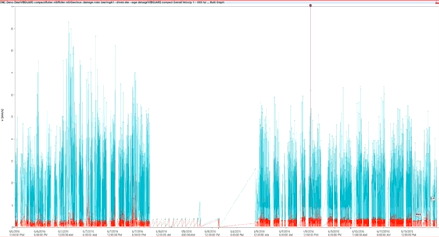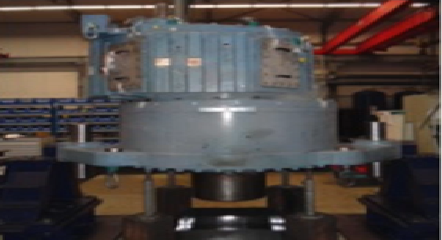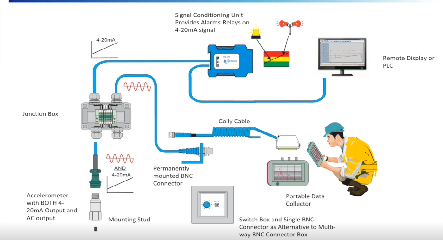Use HD Technology to Manage the Risk of Bearing Faults
We can map the four stages of bearing damage on the P–F curve and determine the risk of sudden functional failure.
At stages 1 and 2, the risk is fairly limited and the bearing is assumed to have a substantial remaining lifetime. But the risk goes up once the bearing has severe or mature damage.
We can look at this in a different way by plotting another curve that represents the operational risk. The operational risk increases exponentially close to the point of functional failure.
How does the technology we use stack up to the risk level? Overall vibration catches bearing damage very late, when there may be 0.1% of the bearing lifetime left. Traditional vibration, let’s say systems with poor signal-to-noise ratio and limited maximum frequency, has a limited ability to pick up early-stage bearing damage. There is still a substantial risk of jeopardizing operations.
The answer to this problem is HD technology. Because it provides an early warning, we have the ability to minimize the risk as much as possible.
Do we need HD technology for all assets? No. Assets which are less critical can be monitored by vibration transmitters or low-cost wireless sensors. But be aware that what you cannot detect, you cannot predict. If you can accept a certain risk level, that’s a good solution. For more critical equipment, we recommend establishing a long pre-warning time.
HD technology can extend asset lifetime. SPM HD and the ability to determine lubricant condition or the quality of the bearing mounting, and detect minor deviations in the early stages, allow us take proactive action: lubricate the bearing, choose another lubricant, swap a faulty lubricant gun that’s not getting lubricant to the bearing, etc. You have the opportunity to extend the bearing lifetime to its optimum. From a sustainability point of view, that is what we should all try to achieve.
The smaller the pre-warning time, the less opportunity we have to extend the asset lifetime. We can lubricate the bearing, try to remove the metal particles, and run the asset smoothly for the last couple of weeks of its life, but that’s about it.






